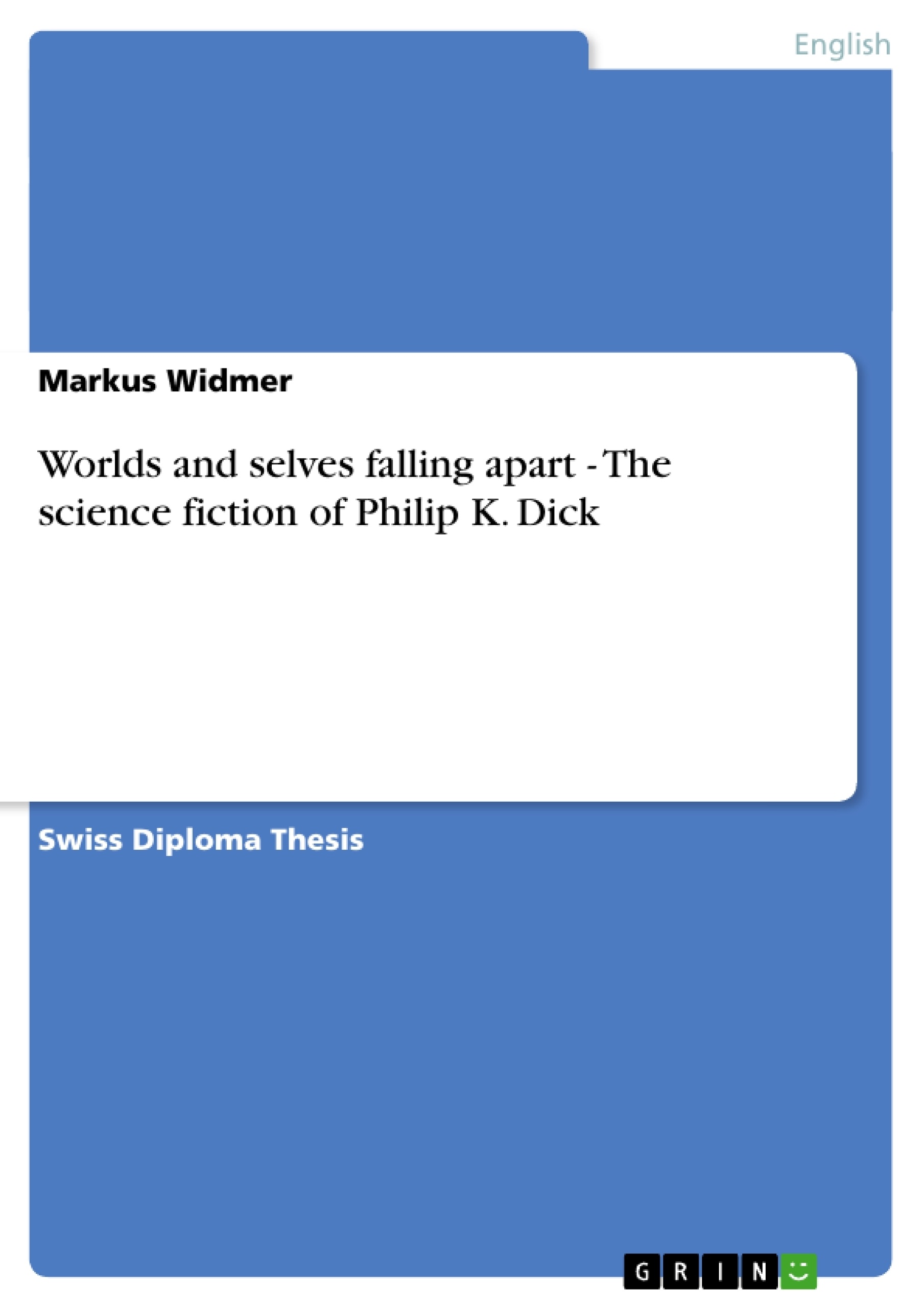Philip K. Dick's science fiction can be seen as a discussion of the human condition in a world where nothing is what it seems. Human identity has become uncertain, as has the nature of reality itself. This Dickian ontology has a striking similarity to postmodernist theories by thinkers such as Jameson, Baudrillard and McHale, most of whom, by the way, have a weak spot for science fiction. The discussion of Philip K. Dick's novels and short stories against a backdrop of postmodernist theory leads to conclusions that are not only relevant for the author's particular poetics, but for the ontology of our lives in times that science fiction couldn't have imagined.
This work focusses on Philip K. Dick's unstable worlds and subjects, investigating Dickian space, time and meaning as well as the author's subjects and the question of schizophrenia and paranoia. Works discussed include Ubik, Time Out of Joint, The Man in the High Castle, A Maze of Death, Eye in the Sky, A Scanner Darkly, Martian Time-Slip and Impostor.
Inhaltsverzeichnis (Table of Contents)
- Introduction
- IRIDESCENT WORLDS: UBIK
- TIME AND HISTORICITY: TIME OUT OF JOINT
- METAFICTION AND THE REAL WORLD: "SMALL TOWN," THE MAN IN THE HIGH CASTLE AND A MAZE OF DEATH
- FLUID SELVES: EYE IN THE SKY AND A SCANNER DARKLY
- SCHIZOPHRENIA: MARTIAN TIME-SLIP
- PARANOIA: "IMPOSTOR"
- CONCLUSION
Zielsetzung und Themenschwerpunkte (Objectives and Key Themes)
This paper examines the science fiction of Philip K. Dick within the context of postmodernism. It explores how postmodernist theory, with its focus on technology, society, and the individual subject, aligns with the themes of science fiction.
- The relationship between technology and its effects on society and the individual subject
- The nature of reality and the instability of perception
- The construction of selfhood and the fluidity of identity
- The use of metafiction and allegory in Dick's works
- The impact of science fiction on the contemporary cultural moment
Zusammenfassung der Kapitel (Chapter Summaries)
- Introduction: This chapter introduces the main themes and objectives of the paper, focusing on Dick's fascination with the nature of reality and the human condition. It also establishes the connection between science fiction and postmodernism, highlighting the historical and thematic parallels between the two genres.
- IRIDESCENT WORLDS: UBIK: This chapter examines Dick's novel Ubik, analyzing how the text deliberately undermines the stability of the fictional world. It explores the concept of "Dickian space" and its implications for understanding reality.
- TIME AND HISTORICITY: TIME OUT OF JOINT: This chapter delves into Dick's use of historicity in texts like Time Out of Joint, examining his manipulation of time and its impact on the characters and their perceptions.
- METAFICTION AND THE REAL WORLD: "SMALL TOWN," THE MAN IN THE HIGH CASTLE AND A MAZE OF DEATH: This chapter focuses on Dick's preference for allegory and metafiction, analyzing his storytelling techniques in "Small Town," The Man in the High Castle, and A Maze of Death. It explores the relationship between Dick's fictional worlds and the real world, highlighting his use of metafiction as a means of exploring the nature of meaning-production.
- FLUID SELVES: EYE IN THE SKY AND A SCANNER DARKLY: This chapter examines Dick's exploration of identity and selfhood in Eye in the Sky and A Scanner Darkly, showcasing how his characters grapple with the fluidity of their selves in unstable and unpredictable worlds.
Schlüsselwörter (Keywords)
This paper focuses on the themes of postmodernism, science fiction, reality, identity, technology, society, metafiction, allegory, and the works of Philip K. Dick.
- Citation du texte
- Mag. Markus Widmer (Auteur), 2000, Worlds and selves falling apart - The science fiction of Philip K. Dick, Munich, GRIN Verlag, https://www.grin.com/document/14779



